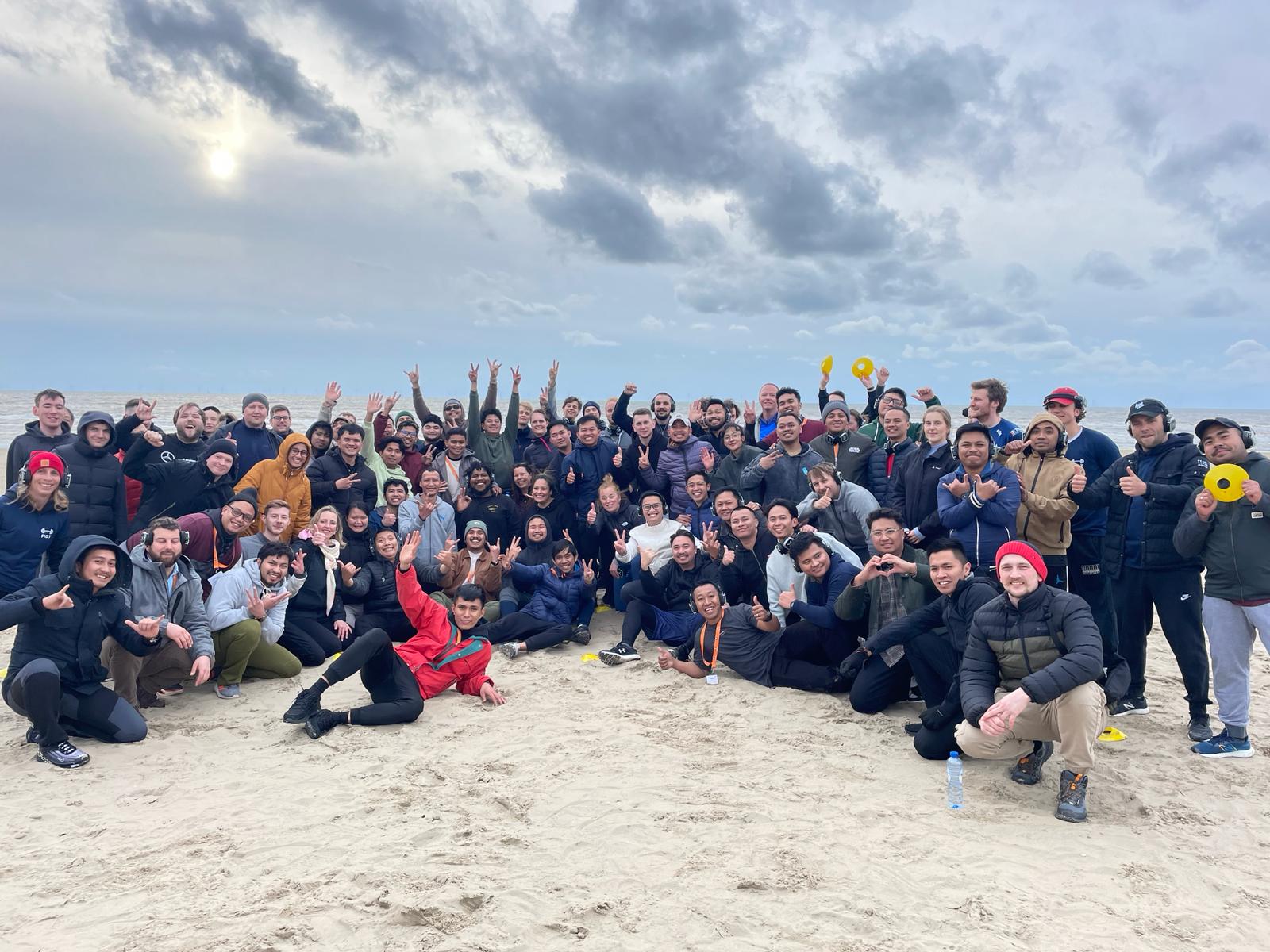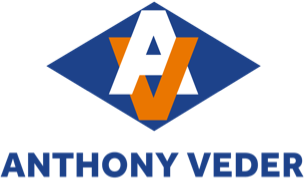
Sustainable growth report 2024
Sustainable growth report 2024
Definitions are explained below to give insight in how specific figures and emissions are calculated.
Annual Efficiency Ratio (AER): tank to well
The AER is a carbon efficiency metric which is calculated in accordance with the Poseidon Principles. Instead of calculating carbon efficiency based on the actual cargo carried, AER assumes the vessel is continuously carrying cargo and utilises the vessel’s designed summer deadweight capacity in the calculations. The AER is calculated by dividing the vessel’s absolute CO2 emissions by the product of the distance sailed and the summer deadweight of that vessel. The AER of the fleet is calculated by taking the average of all AERs of the vessels.
Carbon Intensity Indicator (CII)
This is the carbon intensity indicator and is based on the AER, and includes several exemptions of which ice, ice capacity and cooling energy are used. Under the amendments to the International Convention for the Prevention of Pollution from Ships (MARPOL) Annex VI entered into force on 1 November 2022. As of 1 January 2023 vessels above 5000 GT will need to report on their CII, and therefore the collection of data to calculate this indicator must be in place. We only report the CII for vessels under our ship management.
Control by contracts
The underlying principle for reporting on emissions is to use international and reputable standards. It is important to recognise the difference of mandatory reporting programs, such as IMO DCS and EU MRV and voluntary corporate accounting, the latter is the basis for the data shared in this report. For the reporting of emissions of our vessels, we have taken the position of control-by-contracts approach. This means that all the emissions from any vessel necessary to perform under contracts that Anthony Veder is (part) owner of are being reported, e.g.:
- Anthony Veder contracted for a time charter and employs a vessel 100% owned by Anthony Veder; 100% of the emissions under this contract are reported
- Anthony Veder contracted for a time charter and employs a vessel that is chartered in and not owned by Anthony Veder; 100% of the emissions under this contract are reported
- A Special Purpose Vehicle, in which Anthony Veder has a 75% stake, contracted for a time charter and employs a vessel 100% owned by the SPV; as such 75% of the emissions under this contract are reported
- Anthony Veder as commercial manager of the Anthony Veder Gas Pool contracted for various COAs and spot voyages, to fulfil its commitments Anthony Veder Gas Pool contracts 100% Anthony Veder owned Vessel and vessels owned by other pool members; 100% of the emissions of all vessels serving in the Anthony Veder Gas Pool are reported
Above control-by-contracts approach could mean that there will be double counting of emissions that are voluntary reported, as owners of chartered in vessels or vessels owned by pool members might be reporting the same emissions. However, within mandatory reporting, there will be no double counting, as e.g. within the IMO DCS and EU MRV systems only the ship manager is reporting the emission of the vessel.
CO₂ emissions
Calculations are based on emission factors and fuel consumption for the year. We followed the emission factors from AR5 (from the IPCC’s Fifth Assessment Report). See “Emissions by contracts” above for the definitions of what emissions for vessels under our control are taking into account.
CSRD
This means the EU Corporate Sustainability Reporting Directive (CSRD), which entered into force on 5 January 2023.
Summer deadweight tonnage (DWT)
Summer deadweight tonnage specifies a vessel’s maximum permissible deadweight, as a sum of the weights of cargo, fuel, freshwater, ballast water, provisions and crew. This figure is used for the calculation of the AER, and consequently the CII.
EEXI
Means the Energy Efficiency eXisting ship Index. Under the Amendments to the International Convention for the Prevention of Pollution from Ships (MARPOL) Annex VI entered into force on 1 November 2022, as per 1 January 2023 it is mandatory for all ships above 400 GT to be compliant with the Energy Efficiency Existing Ship Index.
EFRAG
EFRAG is a private association established in 2001 with the encouragement of the European Commission to serve the public interest. EFRAG extended its mission in 2022 following the new role assigned to EFRAG in the CSRD, providing technical advice to the European Commission in the form of fully prepared draft EU Sustainability Reporting Standards and/or draft amendments to these Standards.
Emission figures
Over the last years we have used several emission factors and lower heating values (LHV) to make sure that we are using the most accepted factors. This year, there were some changes as well. The 2022 and 2023 figures have been adjusted accordingly, using the emission factors of AR5 (from the IPCC’s Fifth Assessment Report), and the ANNEX II to the Proposal for a Regulation of the European Parliament and of the Council on the use of renewable and low-carbon fuels in maritime transport and amending Directive 2009/16/EC.
- Emission factors that are used in this report:
- CH4: 28 tCO₂eq/tCH4
- N2O: 265 tCO₂eq/tN2O
- The following carbon intensity factors and the lower heating values (LHV) of the fuels are used:
- LSFO: 13.2 [gCO₂eq/MJ]; LHV 41.0 MJ/kg
- MGO: 14.4 [gCO₂eq/MJ]; LHV 42.7 MJ/kg
- LNG: 18.5 [gCO₂eq/MJ]; LHV 49.1 MJ/kg
Emission greenhouse gas (GHG): tank-to-wake
Calculations are based on the emission factors from AR5 and the Directive 2009/16/EC and on the fuel consumption for the year. We followed the CO2 equivalent factors for fuels from the AR5 report. To calculate the GHG emissions for refrigerants and for cargo venting/purging/flaring we used the conversion factors from the Climate Change (IPCC) fifth assessment report (AR5) and from EU regulation on fluorinated greenhouse gases and repealing Regulation (EC) No 842/2006.
Emission greenhouse gas (GHG): well-to-wake
In addition to the previous paragraph (tank-to-wake), in this part also the emissions from the well-to-tank are included. Those are expressed in CO2 equivalents. The lower heating values (LHV) are used from the FuelEU standards, and the well-to-tank emission factors are from the EU directive on the use of renewable and low carbon fuels in maritime transport, amending Directive 2009/16/EC.
ESG report
ESG stands for Environment, Social and Governance and is the annual report that meets the requirements of the CSRD, following the ESRS.
GWP: Global warming potential
The GWP is used to express GHGs in CO2 equivalent tons, to be able to compare GHGs against each other. There are two different GWPs available, in this report, we use the GWP100, which is the global warming potential on a 100-year basis, which is used as the industry standard.
IMO
Means the International Maritime Organisation, the United Nations specialised agency with responsibility for the safety and security of shipping and the prevention of marine and atmospheric pollution by ships.
Net Zero Ratio (NZR)
NZR is a carbon equivalent efficiency metric which is calculated using the same methodology as the AER. NZR uses the GHG emissions (CO2, CH4, N2O) with carbon factors (CO2 equivalents) following a well-to-wake analysis, divided by the product of the distance sailed and the summer deadweight of that vessel.
OGSM
Framework for our Objective, Goals, Strategies and Measures. It is a roadmap to guide us to our 5-year short-term strategy cycle.
SEEMP
Means the Ship Energy Efficiency Management Plan. SEEMP (Part I) is required for all ships above 400 GT under the MEPC 62 (July 2011) with the adoption of amendments to MARPOL Annex VI, by Parties to MARPOL Annex VI, this entered into force on the 1st of January 2013. SEEMP (Part II) entered into force on the 1st of January 2019 and required every vessel over 5,000 GT to collect data and report on their fuel oil consumption. SEEMP (Part III) includes a ship-specific document that lays out the plan to meet CII ratings in the next 3 years and how to improve it and is mandatory for vessels above 5,000 GT.
Scope 1 emissions
Direct emissions (based on tank-to-wake) i.e. fuel used for our ships and business cars.
Scope 2 emissions
Indirect emissions which are related to the purchased electricity or energy i.e. for heating or cooling our assets.
Scope 3 emissions
In this report, we report scope 3 emissions on well-to-tank emissions from fuel, and we estimate the other scope 3 emissions using the Salacia platform, using the spent-based approach and the hybrid method.
Ships
The number of our ships are counted per 31 December and includes ships that are either partially or fully owned by us, those under construction, and those under commercial contract, unless otherwise mentioned.
UNSDGs: United Nations Sustainable Development Goals
The 2030 agenda for Sustainable Development, adopted by all United Nations Member States in 2015, provides a shared blueprint for peace and prosperity for people and the planet, now and in the future. At its heart are the 17 Sustainable Development Goals (SDGs), which are an urgent call for action by all countries – developed and developing – in a global partnership. They recognise that ending poverty and other deprivations must go hand-in-hand with strategies that improve health and education, reduce inequality, and spur economic growth – all while tackling climate change and working to preserve our oceans and forests. In this report on our targets, we refer to one or more SGDs.
Total distance sailed by vessels (in nautical miles)
The distance sailed by all owned and/or operated vessels during the calendar year. This includes company-owned vessels, partially company owned vessels to their relative share and commercially operated vessels.
